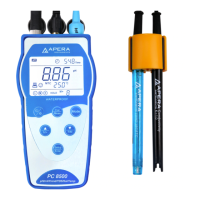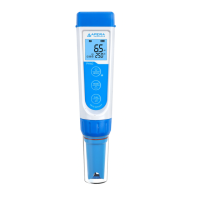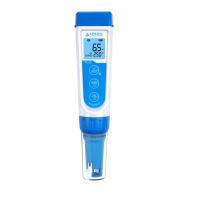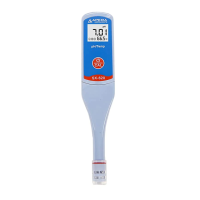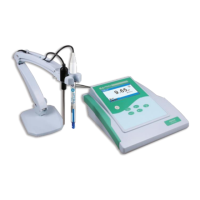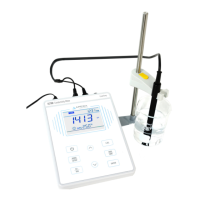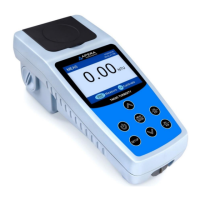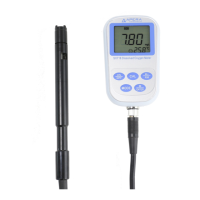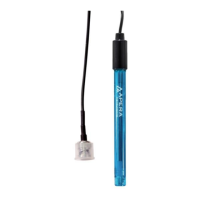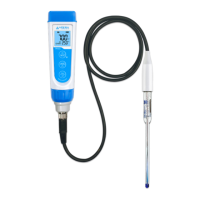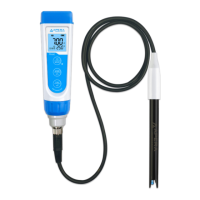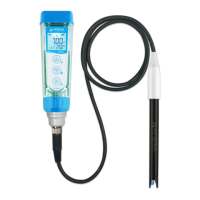should be refreshed often, especially after heavy use. We recommend 10-15 times of use before
replacing the pH buffers.
5.6.3 Protect the glass bulb sensor
The sensitive glass bulb at the front of the combination electrode should not come in contact with
hard surfaces. Scratches or cracks on the electrode will cause inaccurate readings. Before and after
each measurement, the electrode should be washed with distilled water and dried. If a sample sticks
to the electrode or it’s contaminated, the electrode should be thoroughly cleaned using a soft brush
and then rinsed with distilled water. After that, soak it in the KCL solution again for 6 hours.
5.6.4 Renew glass bulb
Electrodes that have been used over a long period of time will become aged. Submerge the electrode
in 0.1mol/L hydrochloric acid for 24 hours, then wash the electrode in distilled water, then submerge
it in KCL soaking solution for 24 hours. The method to prepare 0.1mol/L hydrochloric acid: dilute 9mL
hydrochloric acid in distilled water to 1000mL. For serious passivation, submerge the bulb in 4% HF
(hydrofluoric acid) for 3-5 seconds, and wash it in distilled water, then submerge it in the soaking
solution for 24 hours to renew it.
5.6.5 Clean contaminated glass bulb and junction (please refer to Table-7)
Table-7 Clean contaminated glass bulb and junction
6 mV Measurement
6.1 mV Measurement
Press to open, and press to switch the meter to mode. mV mode is a mode for
ORP and Ion electrode measurement. Connect ORP electrode (the 301Pt-C combination ORP
electrode is sold separately) and dip it in sample solution, stir the solution briefly and allow it to
stay in the solution until icon appears and stays, then record the reading. ORP means
Oxidation Reduction Potential. The unit is mV.
Connect Ion electrode and reference electrode to measure Ion electric potential.
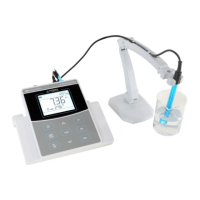
